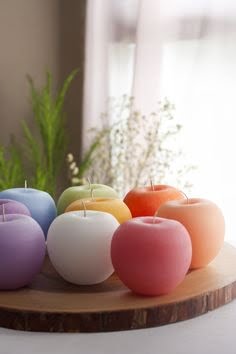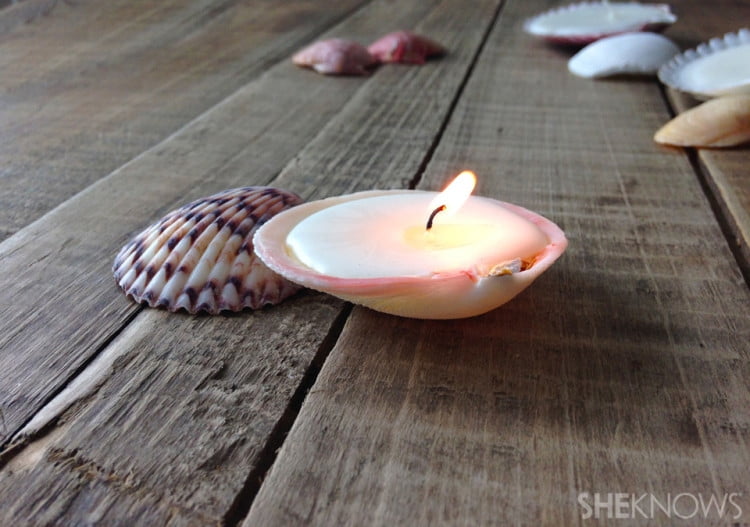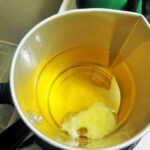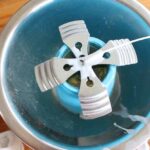Candle making is a centuries-old craft that has provided warmth, light, and ambiance to countless homes and ceremonies. Whether you’re an experienced candle maker or just starting out, understanding the key elements of this craft is essential for creating high-quality candles. One such element that plays a significant role in candle making is the melt point.
The melt point refers to the temperature at which wax begins to change from a solid state to a liquid state. It is a crucial factor in determining the overall performance and characteristics of candles. This article will delve into the science behind candle making, exploring the concept of melt point and its importance in creating candles that burn evenly, release fragrance effectively, and have optimal burn time.
In order to grasp the significance of melt point in candle making, it is necessary to first understand the role of wax. Wax serves as the main ingredient in candles, providing fuel for an even and controlled burn. Different types of wax have distinct melting characteristics and varying ranges of melt points. Both natural and synthetic waxes are used in candle making, each offering unique advantages and considerations when it comes to their specific melting points.
By gaining a comprehensive understanding of melt point and how it interacts with different factors such as wax type, additives, and blends, you will be able to select the right materials for your specific candle making projects. Additionally, understanding how melt point impacts various aspects of a candle’s performance – including scent throw, burn time, stability, as well as safety considerations – can help you troubleshoot potential issues and optimize your end products.
As you embark on your journey into the world of candle making or seek to enhance your existing skills and knowledge in this craft, understanding melt point will be instrumental in creating successful candles that meet your desired goals.
In the following sections of this article, we will explore different types of wax used in candle making, investigate how melt point affects candle performance in detail, discuss testing methods for accuracy and consistency, as well as provide helpful tips and tricks for working with different melt points.
So, let’s dive in and master the science behind melt point for successful candle making.
The Science Behind Candle Making
Defining Melt Point: What It Signifies and Its Importance in Candle Making
The melt point of wax is a crucial factor in the craft of candle making. It refers to the temperature at which a solid wax turns into a liquid state. Understanding melt point is essential for candle makers as it greatly affects the success and performance of their candles.
The role of melt point in candle making goes beyond just the physical transformation of wax. It also influences important aspects such as scent throw, burn time, and even safety considerations. By understanding the concept of melt point, candle makers can make informed decisions about the types of wax to use, adjust their formulations if necessary, and ultimately create high-quality candles that meet their desired outcomes.
Factors Influencing Melt Point: Wax Type, Additives, and Blends
The melting characteristics of wax are determined by various factors including the type of wax used, any additives or blends incorporated, and external conditions during the candle-making process. Each type of wax has its own distinct melt point range, making it suitable for different applications and purposes.
Here is a breakdown of some commonly used waxes:
- Paraffin Wax: This widely used petroleum-based wax has a wide melt point range between 120°F and 160°F (49°C – 71°C). It is known for its excellent scent throw and versatility.
- Beeswax: A natural alternative to paraffin wax, beeswax has its own unique characteristics. Its melt point typically falls between 143°F and 149°F (62°C – 65°C), resulting in longer burning times compared to other waxes.
- Soy Wax: Derived from soybean oil, soy wax has gained popularity in recent years due to its eco-friendly nature. It generally has a lower melt point ranging from 120°F to 165°F (49°C – 74°C) depending on the formulation.
In addition to wax type, the use of additives and blends can also affect the melt point of a candle. For example, the addition of stearic acid or other hardening agents can raise the melt point, while the inclusion of lower-melting-point waxes or oils can lower it. Candle makers can experiment and fine-tune their formulations to achieve the desired melt point for their specific candle-making goals.
Understanding these factors is vital in selecting the appropriate wax for different applications and ensuring that candles perform optimally. By considering the desired characteristics and final results, candle makers can choose the most suitable wax and make any necessary adjustments to achieve their desired melt points.
| Wax Type | Melt Point Range |
|---|---|
| Paraffin Wax | 120°F – 160°F (49°C – 71°C) |
| Beeswax | 143°F – 149°F (62°C – 65°C) |
| Soy Wax | 120°F – 165°F (49°C – 74°C) |
Types of Wax Used in Candle Making
Paraffin Wax: Its Melt Point Range and Characteristics
Paraffin wax is one of the most commonly used waxes in candle making. It has a wide range of melt points, typically between 120°F to 160°F (49°C to 71°C). The specific melt point of paraffin wax can vary depending on its grade and additives. Paraffin wax is known for its affordability, availability, and ability to hold fragrance well. It also produces a smooth and glossy finish on candles.
It is important to note that different grades of paraffin wax have different melt points, which can affect the performance of candles. For example, pillar blend paraffin wax has a higher melting point compared to container blend paraffin wax. This means that pillar blend wax is better suited for making sturdy pillars or votives that require a higher melt point for structural integrity.
Beeswax: A Natural Alternative with a Distinct Melt Point
Unlike paraffin wax, beeswax is a natural alternative that offers unique characteristics in candle making. Beeswax has a relatively high melt point, typically around 145°F to 147°F (63°C to 64°C), although it can vary slightly depending on the source. This high melt point allows beeswax candles to burn slower and longer compared to other types of waxes.
One advantage of beeswax is its natural aroma, which adds a subtle honey-like scent to the candles. Beeswax also has a beautiful golden color that gives an attractive appearance to the finished candles. However, it should be noted that beeswax can be more expensive than other waxes due to its limited availability and higher production costs.
Soy Wax: In-Depth Analysis of Its Melt Point and Benefits
Soy wax is another popular choice among candle makers, especially those who prefer natural and eco-friendly options. Soy wax has a lower melt point compared to paraffin and beeswax, typically ranging from 120°F to 145°F (49°C to 63°C). This lower melt point allows soy wax candles to have a longer burn time.
One of the major advantages of soy wax is its clean-burning nature. It produces minimal soot and smoke, making it ideal for those with respiratory sensitivities or allergies. Additionally, soy wax has excellent fragrance-holding capabilities, allowing it to evenly distribute scents throughout the candles when they are lit.
Overall, understanding the characteristics and melt points of different types of wax is crucial in candle making. Each type of wax offers unique benefits and considerations for specific projects. By selecting the right wax based on its melt point range, candle makers can ensure optimal performance and desired results in their creations.
Understanding the Impact of Melt Point on Candle Performance
The melt point of wax plays a crucial role in determining the overall performance of a candle. Not only does it affect the consistency and quality of the burn, but it also influences other important factors such as scent throw, burn time, and safety considerations.
One significant aspect influenced by melt point is candle stability. The relationship between melt point and scent throw is closely connected. Generally, candles with a higher melt point tend to have better scent throw.
This is because higher melt point waxes have the ability to hold more fragrance oil, resulting in a stronger and longer-lasting aroma when the candle is burned. On the other hand, lower melt point waxes may struggle to retain or release fragrance effectively, leading to a weaker scent throw.
Additionally, melt point also affects the burn time of candles. A higher melt point wax tends to have a longer burning time compared to lower melting waxes. This is because higher melt point waxes have a slower rate of consumption when burned, allowing the candle to last longer. Conversely, lower melting waxes tend to burn at a faster rate and therefore have a shorter lifespan.
Melt point also plays a role in ensuring candle container compatibility and safety. Different types of containers can withstand different levels of heat before becoming damaged or unsafe. Therefore, it is important to choose a wax with an appropriate melt point that matches the characteristics and limitations of your candle container material. Using wax with too high or too low of a melt point for your container could potentially cause cracking or leakage during burning.
Overall, understanding how melt point influences various aspects of candle performance is essential for successful candle making. By selecting the right wax type with an appropriate melt point range, you can achieve optimal results in terms of scent throw, burn time, and safety considerations for your candles.
Testing and Determining Melt Point in Candle Making
Testing and determining the melt point of wax is a crucial step in candle making. This information helps candle makers understand how the wax will behave during the melting and pouring process, as well as its performance while burning. By accurately measuring and testing the melt point, candle makers can ensure quality and consistency in their products.
To determine the melt point of wax, specific tools and techniques are used. One common method is to use a thermometer specifically designed for measuring high temperatures. The wax sample is heated slowly and continuously until it completely melts, while the temperature is monitored. The temperature at which all the wax has melted is recorded as the melt point. Another method involves using a hot plate or water bath to heat the wax sample until it melts completely.
Accurate testing of the melt point is important because it provides valuable information about how the wax will perform in different scenarios. For instance, knowing the melt point can help determine if a particular type of wax is suitable for container candles or pillar candles. It can also indicate whether certain fragrance oils or essential oils will be compatible with a specific wax’s melt point.
| Tools and Techniques | Measuring Melt Point with Precision |
|---|---|
| Thermometer | A thermometer specifically designed for measuring high temperatures is used to monitor the temperature at which all the wax has melted. |
| Hot Plate or Water Bath | A hot plate or water bath can be used to gradually heat the wax sample until it completely melts. |
Accurate testing of melt points not only ensures consistent quality but also allows candle makers to troubleshoot any potential issues. If the melt point is too low, the candle may have poor stability and may not be able to hold a significant amount of fragrance oils.
On the other hand, if the melt point is too high, the wax may have poor burn characteristics and may not release its fragrance effectively. By identifying these issues through melt point testing, adjustments can be made to create candles with optimal performance.
In addition to determining the melt point, it is also important to record and document this information for future reference. Keeping track of the melt points of different waxes and their performance characteristics can help candle makers make informed decisions when selecting the right wax for their specific projects.
Overall, testing and determining the melt point in candle making is an essential step in creating high-quality candles. It allows candle makers to understand how wax will behave during melting, pouring, and burning processes. By using precise tools and techniques, accurate results can be obtained, enabling candle makers to troubleshoot any potential issues and make informed decisions about their candle-making materials.
Sources:
- Chandler’s Guide: Candle Making Techniques
- The Spruce Crafts: How to Test Melt Points in Candle Making
Selecting the Right Wax and Melt Point for Your Candle Making Projects
When it comes to candle making, selecting the right wax and melt point is crucial to achieving optimal results. The type of wax and its corresponding melt point will greatly impact factors such as scent throw, burn time, and container compatibility. To ensure success in your candle making projects, it is important to understand your goals, consider various factors, and explore different wax options based on melt point recommendations.
Understanding Your Goals: Personal Use or Commercial Production?
Before diving into the world of candle making, it is important to determine your goals for your projects. Are you creating candles for personal enjoyment or are you planning to produce them commercially? This distinction will influence the wax type and melt point you choose.
For personal use, you have more flexibility with wax selection as you can experiment with different types and melt points based on your preferences. However, if you plan to sell your candles commercially, it is crucial to research market demands and consumer preferences.
Certain markets may have specific expectations or regulations regarding the type of wax used or recommend melt points for particular candle types. Understanding your target audience will help guide you in selecting the most appropriate wax and melt point for your projects.
Factors to Consider: Fragrance Load, Wick Type, and Desired Results
In addition to considering your goals, there are several other factors that should be taken into account when selecting the right wax and melt point for your candle making projects:
1. Fragrance Load: If you plan to add fragrance oils or essential oils to your candles, it is important to consider their compatibility with different waxes at various melting points. Some fragrances may react differently depending on the temperature at which they are added.
2.Wick Type: The size and material of the wick used in a candle can be influenced by the wax and its melt point. Different waxes may require specific wick types to ensure proper burn and avoid issues such as tunneling or excessive smoke.
3. Desired Results: Consider the end result you want to achieve with your candles. Are you looking for a longer burn time, maximum scent throw, or a particular visual aesthetic? Different wax types and melt points can help you achieve these desired results.
Exploring Wax Options Based on Melt Point Recommendations
Once you have considered your goals, fragrance load, wick type, and desired results, it is time to explore the various wax options available based on recommended melt points. Paraffin wax, beeswax, soy wax, palm wax, coconut wax, and more all have different melting characteristics and offer unique benefits.
1. Paraffin Wax: Paraffin wax has a wide range of melt points depending on its additives and blends. It is known for its excellent scent throw but may require additional additives for better burn performance.
2. Beeswax: Beeswax has a distinctive melt point that provides excellent burning properties and long-lasting candles. It is a natural alternative often preferred by those seeking an eco-friendly option.
3. Soy Wax: Soy wax typically has a lower melt point compared to paraffin or beeswax. It offers clean burning with minimal soot production and is often preferred by those looking for natural alternatives.
When selecting the right wax and melt point for your projects, it is important to conduct thorough research, test different options, and take into account the specific requirements of each candle type or market segment you are targeting. By understanding your goals, considering various factors such as fragrance load and wick type, and exploring different wax options based on recommended melt points, you can set yourself up for success in your candle making endeavors.
Tips and Tricks for Working with Different Melt Points
Working with different melt points in candle making can offer a variety of creative opportunities. By blending waxes and incorporating additives, candle makers can modify the melt point to achieve desired results. Here are some tips and tricks for working with different melt points in candle making:
- Modifying Melt Point: Blending Waxes and Additives for Custom Creations Blending waxes is a wonderful way to customize your candles by creating unique melt points. By combining different types of waxes, you can create a wax blend that meets your specific needs. For example, if you want a slower-burning candle, you can blend a high-melt point wax with a lower-melt point wax.
- Layering Techniques: Utilizing Multiple Melt Points for Visual Appeal Layering different melt points in your candles not only adds visual appeal but also enhances fragrance throw and burn time. To achieve this effect, pour one layer of wax at a higher melt point followed by another layer at a slightly lower melt point once the first layer has cooled.
- Candle Design and Aesthetics: Incorporating Melt Point as a Creative Element Melt points can also be used creatively to enhance the design and aesthetics of your candles. For example, if you want to create a textured look on the surface of your candle, you can purposely choose a wax with a higher melt point that will form interesting patterns as it cools.
In addition to blending waxes, additives can also be used to modify the melt point of your candles. Adding stearic acid or microcrystalline wax to your wax mixture can raise the melt point, while adding oils such as coconut oil or olive oil can lower it. Experimenting with different combinations of waxes and additives will allow you to achieve the desired melting characteristics for your candles.
By varying the colors or fragrances between layers, you can create beautiful multi-colored or multi-scented candles. The gradual transition between the different layers provides an enticing aroma experience as each layer melts and releases its fragrance into the air.
Furthermore, creating unique shapes or incorporating embeds into your candles is possible by utilizing different melt points. By using waxes with varying melting characteristics, certain parts of the candle can melt at different rates, allowing for intricate designs and embedding possibilities.
FAQs Answered
Can I use two different types of wax with different melt points in the same candle?
One common question that arises when it comes to melt point in candle making is whether it is possible to use two different types of wax with different melt points in the same candle. The answer to this question depends on various factors, including the desired outcome and the compatibility of the waxes being used.
In some cases, using two different waxes with distinct melt points can create interesting visual effects and enhance the overall aesthetic appeal of the candle. For example, layering techniques can be utilized to create multi-colored or multi-textured candles by pouring one layer with a higher melt point wax and another layer with a lower melt point wax. This can result in beautiful creations that have both visual appeal and unique characteristics.
However, it is important to note that when using multiple waxes with different melt points, considerations must be made regarding compatibility. Wax types that are not compatible may not blend well together and could potentially lead to issues such as separation or poor performance of the candle. Therefore, thorough testing should be done beforehand to ensure that the selected waxes work well together and do not compromise the quality or functionality of the final product.
Is there an ideal melt point for all candle types?
Another frequently asked question is whether there is an ideal melt point for all candle types. The answer to this question is no, as the ideal melt point varies depending on factors such as fragrance load, desired burn time, and container compatibility.
Different candle types have different requirements when it comes to melt point. For example, container candles usually require a lower melting point wax since they are contained within a vessel that may not be able to withstand high temperatures. On the other hand, pillar candles typically require a higher melting point wax to ensure proper stability and structural integrity.
The ideal melt point for each candle type will also depend on the fragrance load being used. Some fragrances are more volatile and require a lower melt point wax to release their aroma effectively, while others may perform better with a higher melting point wax.
Therefore, it is important for candle makers to consider the specific requirements of each candle type and test different waxes with varying melt points to determine the ideal choice for their specific needs.
How does melt point affect the choice of fragrance oils and essential oils?
The melt point of wax also plays a crucial role in the choice of fragrance oils and essential oils used in candle making. Different types of oils have different flashpoints, which is the temperature at which they can ignite when exposed to an open flame.
If a fragrance oil or essential oil has a flashpoint that is close to or below the melt point of the wax being used, it can pose safety risks. When the candle burns, the heat can cause the oil to vaporize and mix with oxygen in the air, potentially resulting in a hazardous situation if the flashpoint is exceeded and combustion occurs.
Therefore, it is important for candle makers to select fragrance oils or essential oils that have higher flashpoints than the melt point of the wax. This ensures that there is a safe margin between the temperature at which combustion can occur and the actual burning temperature of the candle.
By considering both melt points and flashpoints, candle makers can create candles that not only smell great but also provide a safe and enjoyable experience for consumers. Thorough research and testing should be conducted to ensure compatibility between waxes and oils, resulting in high-quality candles that meet both aesthetic and safety standards.
Conclusion
In conclusion, understanding and mastering melt point is crucial for successful candle making. Melt point plays a significant role in various aspects of candle performance, including scent throw, burn time, and safety considerations. By selecting the right type of wax with an appropriate melt point range, candle makers can achieve their desired outcomes and create high-quality products.
When it comes to selecting the wax for candle making, there are several options available such as paraffin wax, beeswax, soy wax, palm wax, coconut wax, and more. Each type of wax has its own distinct melt point and characteristics that can influence the overall performance of the candle. It is important to consider factors such as fragrance load, wick type, and desired results when choosing the right wax with the appropriate melt point range.
Accurate testing of melt point is essential to ensure quality and consistency in candle making. By using the right tools and techniques, candle makers can measure melt point with precision. This enables them to troubleshoot any melt point issues or make necessary adjustments in order to achieve optimal results.
Frequently Asked Questions
What is the best melting point for candle wax?
The best melting point for candle wax can vary depending on the specific application and the desired characteristics of the candles. Generally, a melting point between 120-150 degrees Fahrenheit (49-66 degrees Celsius) is considered ideal for most candle waxes. This temperature range allows the wax to melt evenly and thoroughly, ensuring a consistent burn and good scent throw.
However, it’s important to note that different types of waxes may have different optimal melting points. For example, beeswax typically has a higher melting point compared to soy wax or paraffin wax.
What does melting point mean for soy wax?
Melting point for soy wax is an essential factor in candle making. Soy wax is derived from soybean oil, and its melting point refers to the temperature at which it transitions from a solid to a liquid state. The ideal melting point for soy wax is usually around 120-135 degrees Fahrenheit (49-57 degrees Celsius).
This specific range allows the soy wax to melt effectively without losing its desirable properties, such as good adhesion to containers and excellent fragrance retention. If the melting point is too low, the candle might become too soft or lose shape easily; on the other hand, if it’s too high, it can lead to heat damage or poor scent throw.
What does HT and CT mean in candle making?
HT stands for hot throw and CT stands for cold throw in candle making terminology. These terms are commonly used to describe the strength of fragrance when determining how well a scented candle releases its aroma when burned (hot throw) or unlit (cold throw). Hot throw refers to how well a candle releases scent while burning, filling the room with fragrance.
Cold throw refers to how strong the scent is when sniffing an unlit candle or simply having it sit in a room without being lit. Both HT and CT play crucial roles when selecting or formulating fragrances for candles as they affect customer satisfaction and overall aromatic experience. Candle makers often strive for optimum balance in HT and CT to ensure an enticing scent profile throughout the lifespan of their candles.

Welcome to my candle making blog! In this blog, I will be sharing my tips and tricks for making candles. I will also be sharing some of my favorite recipes.





